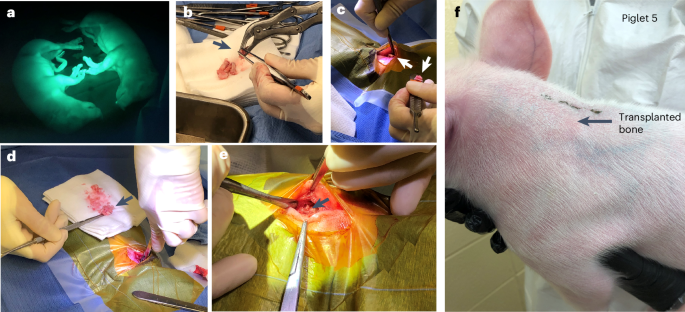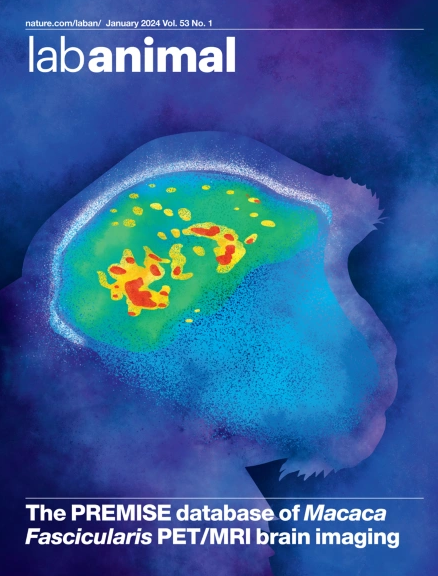Fetal bone engraftment reconstitutes the immune system in pigs with severe combined immunodeficiency
IF 5.9
3区 农林科学
Q1 VETERINARY SCIENCES
引用次数: 0
Abstract
Genetic modification of genes such as recombination activating gene 2 (RAG2) or interleukin-2 receptor-γ (IL2RG) results in pigs exhibiting severe combined immunodeficiency (SCID). Pigs presenting a SCID phenotype are important animal models that can be used to establish xenografts and to study immune system development and various immune-related pathologies. However, due to their immunocompromised nature, SCID pigs have shortened lifespans and are notoriously difficult to maintain. The failure-to-thrive phenotype makes the establishment of a breeding population of RAG2/IL2RG double-knockout pigs virtually impossible. Here, to overcome this limitation, we investigated whether reconstituting the immune system of SCID piglets with a fetal bone allograft would extend their lifespan. Following intramuscular transplantation, allografts gave rise to lymphocytes expressing T cell (CD3, CD4 and CD8), B cell (CD79α) and natural killer cell (CD335) lineage markers, which were detected in circulation as well in the spleen, liver, bone marrow and thymic tissues. The presence of lymphocytes indicates broad engraftment of donor cells in the recipient SCID pigs. Unlike unreconstituted SCID pigs, the engrafted animals thrived and reached puberty under standard housing conditions. This study demonstrates a novel method to extend the survival of SCID pigs, which may improve the availability and use of SCID pigs as a biomedical animal model. Severe combined immunodeficiency (SCID) pigs do not live long enough to reproduce naturally. Monarch et al. show that reconstituting the immune system of SCID piglets with fetal bone allografts extends their lifespan, allowing them to reach puberty.


胎儿骨骼移植可重建重症联合免疫缺陷猪的免疫系统
对重组激活基因 2(RAG2)或白细胞介素-2 受体-γ(IL2RG)等基因进行基因修饰,会导致猪表现出严重的联合免疫缺陷症(SCID)。具有 SCID 表型的猪是一种重要的动物模型,可用于建立异种移植和研究免疫系统发育及各种免疫相关病症。然而,由于其免疫功能低下的特性,SCID 猪的寿命较短,而且很难饲养。这种 "无法茁壮成长 "的表型使得建立 RAG2/IL2RG 双基因敲除猪育种群体几乎不可能。为了克服这一限制,我们研究了用胎儿骨异体移植重建 SCID 仔猪的免疫系统是否能延长它们的寿命。肌肉注射移植后,异体移植物产生了表达 T 细胞(CD3、CD4 和 CD8)、B 细胞(CD79α)和自然杀伤细胞(CD335)系标记的淋巴细胞,这些淋巴细胞在血液循环中以及脾脏、肝脏、骨髓和胸腺组织中均可检测到。淋巴细胞的存在表明供体细胞在受体 SCID 猪体内广泛移植。与未移植的 SCID 猪不同,移植后的动物在标准饲养条件下茁壮成长并进入青春期。这项研究展示了一种延长SCID猪存活期的新方法,可提高SCID猪作为生物医学动物模型的可用性和使用率。
本文章由计算机程序翻译,如有差异,请以英文原文为准。
求助全文
约1分钟内获得全文
求助全文
来源期刊

Lab Animal
农林科学-兽医学
CiteScore
0.60
自引率
2.90%
发文量
181
审稿时长
>36 weeks
期刊介绍:
LabAnimal is a Nature Research journal dedicated to in vivo science and technology that improves our basic understanding and use of model organisms of human health and disease. In addition to basic research, methods and technologies, LabAnimal also covers important news, business and regulatory matters that impact the development and application of model organisms for preclinical research.
LabAnimal's focus is on innovative in vivo methods, research and technology covering a wide range of model organisms. Our broad scope ensures that the work we publish reaches the widest possible audience. LabAnimal provides a rigorous and fair peer review of manuscripts, high standards for copyediting and production, and efficient publication.
 求助内容:
求助内容: 应助结果提醒方式:
应助结果提醒方式:


